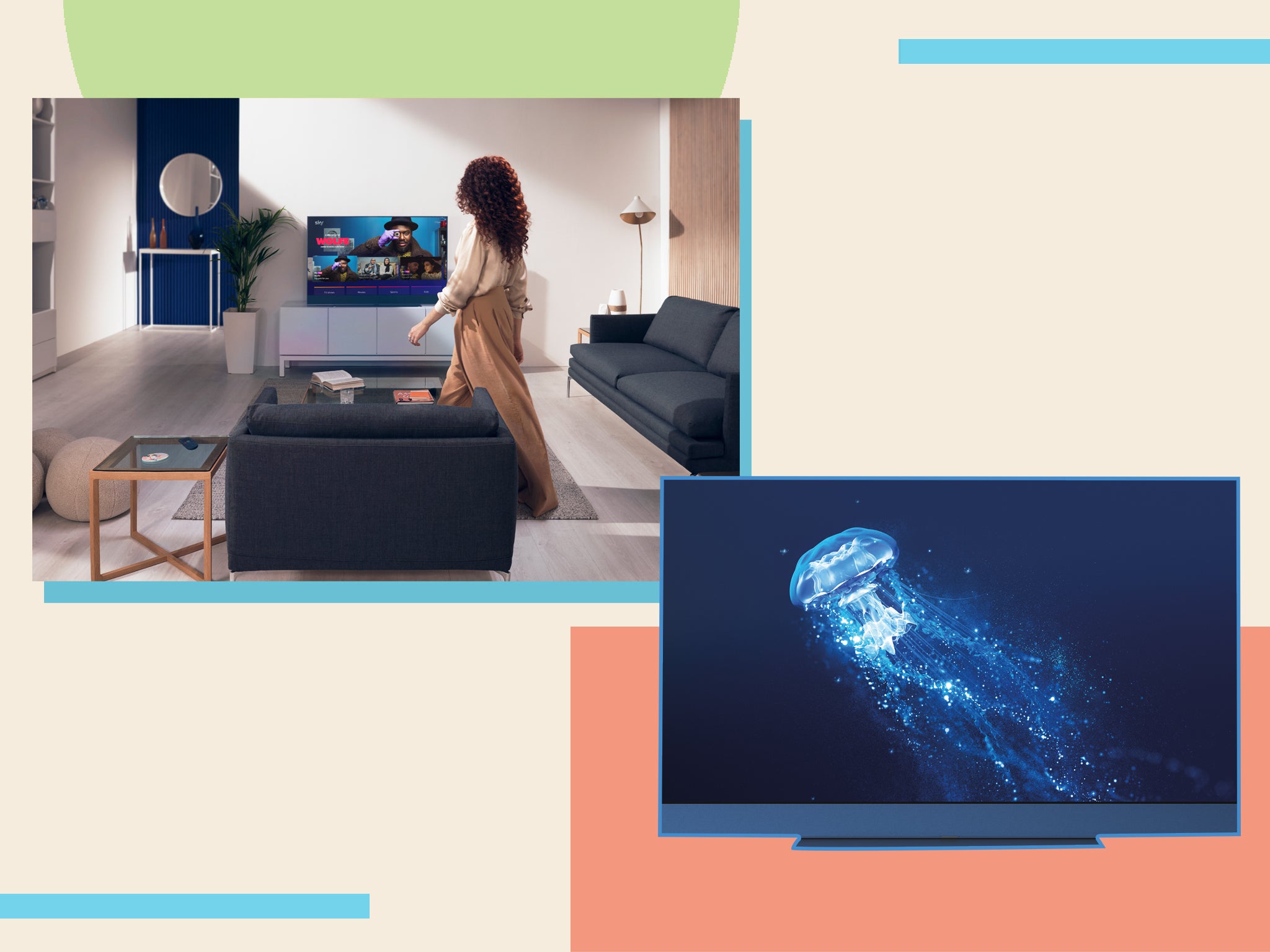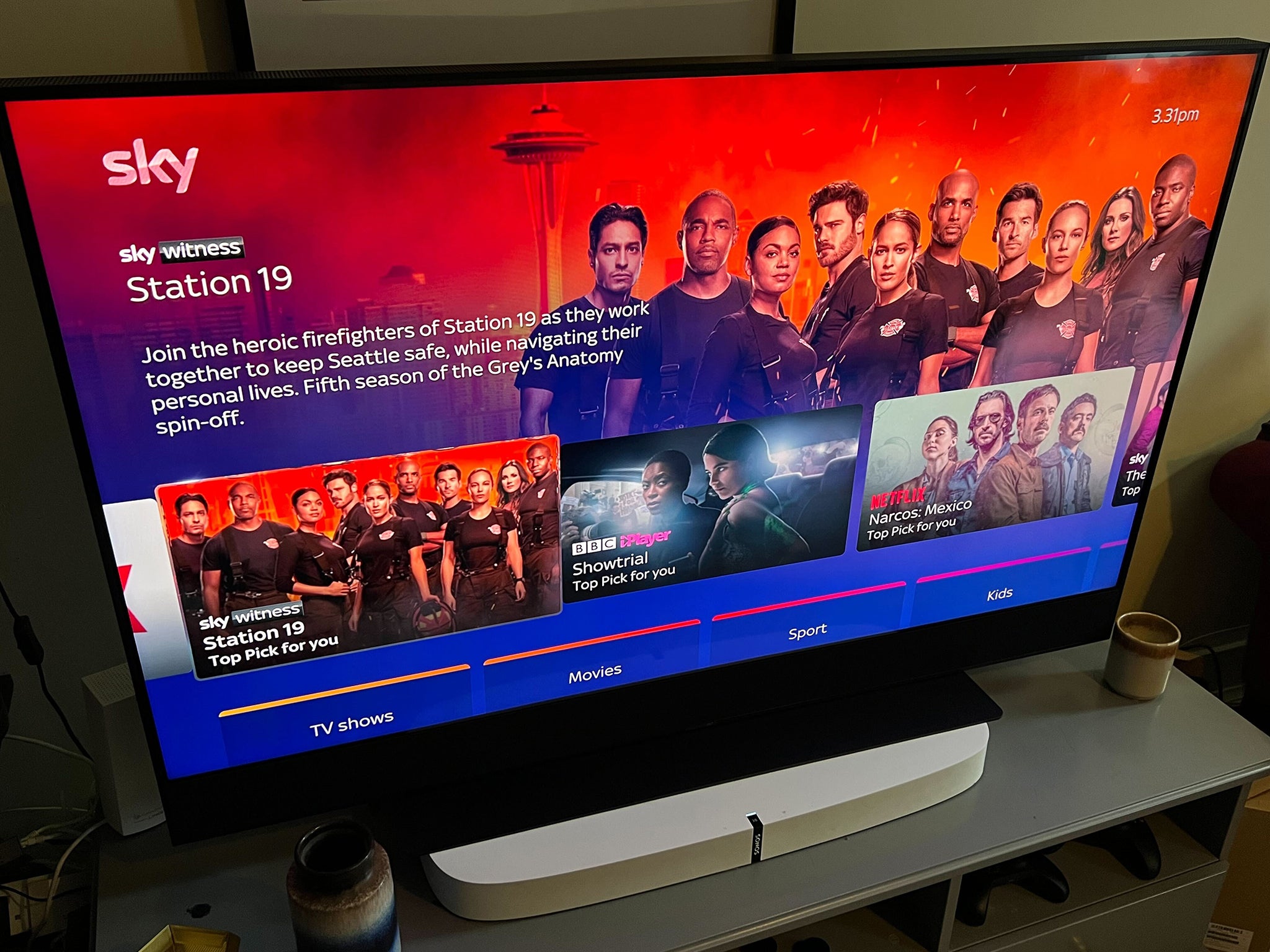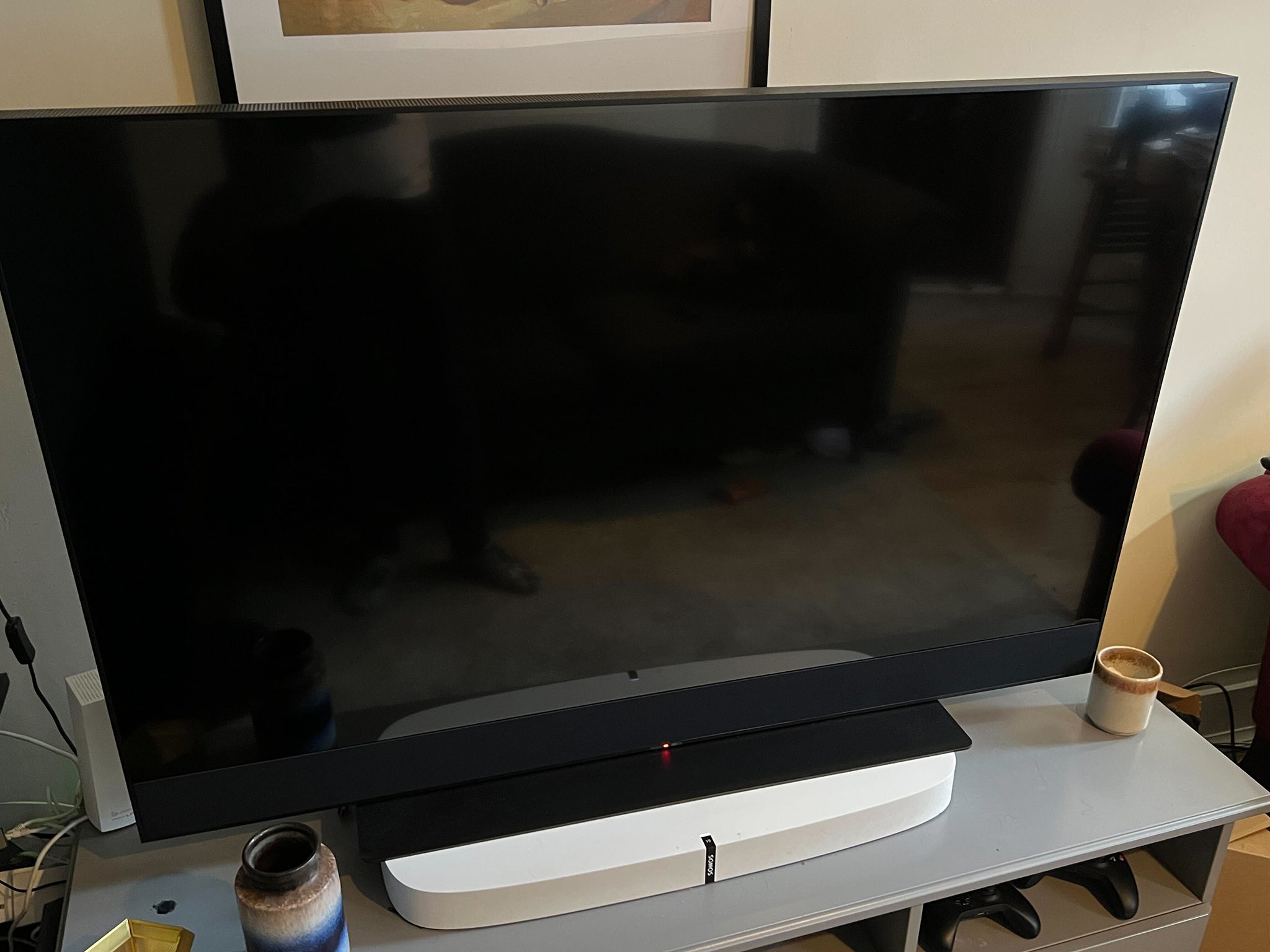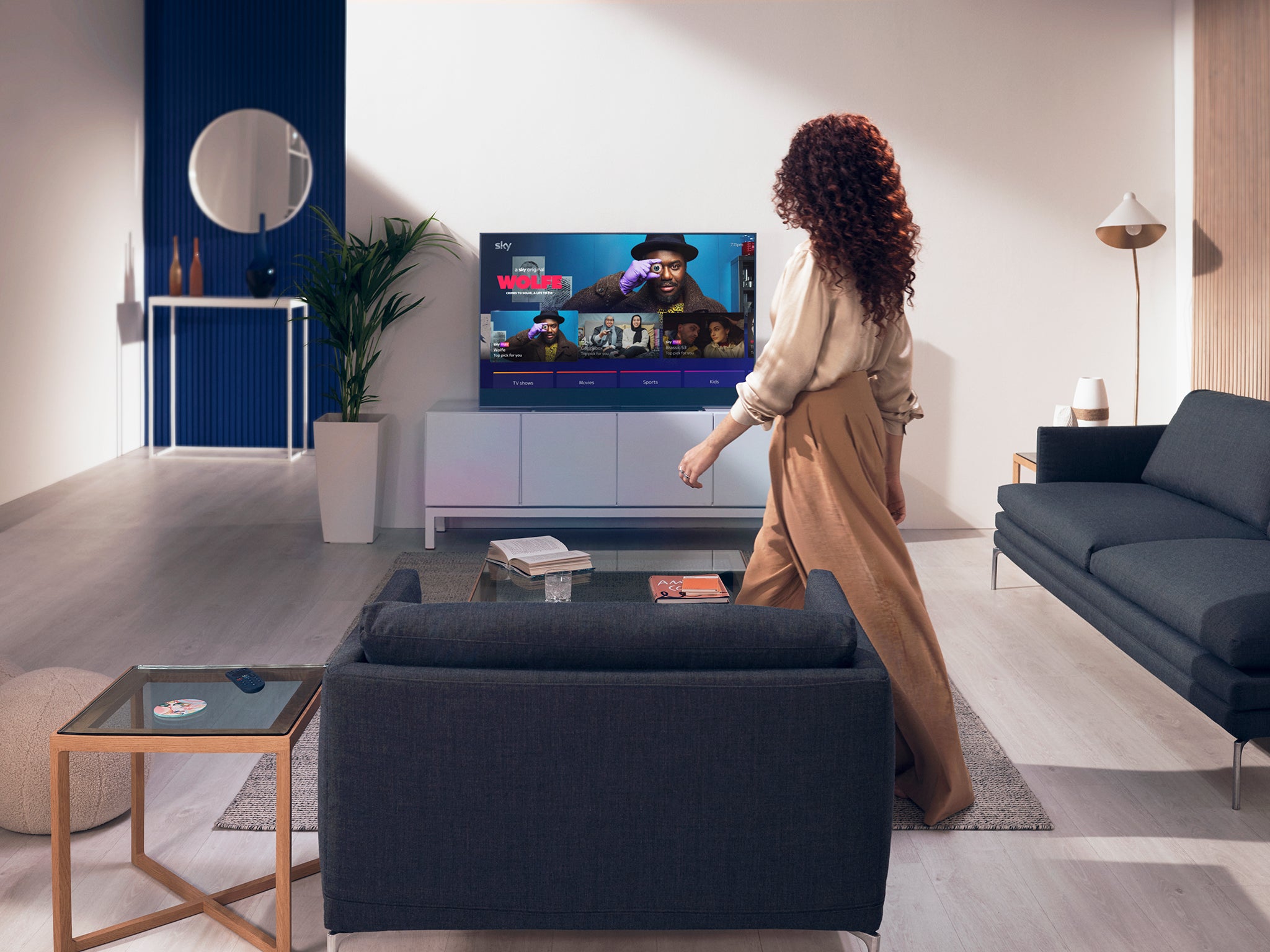The Independent's journalism is supported by our readers. When you purchase through links on our site, we may earn commission. Why trust us?
Sky Glass review: The most seamless way to watch Sky TV yet
We review the pros and cons of the TV with built-in Sky

Sky Glass is the purest, most seamless version of watching Sky TV that there has ever been. And whether you’re going to want to get it will depend entirely on how appealing that sounds.
In its simplest form, Sky Glass is a television with the Sky experience inside: gone are the usual menus, the inputs, and instead you turn on the TV and are presented with the full set of shows and films that are ready to watch.
You do of course get all the apps you’d expect: Netflix and Amazon Prime, and even more unusual ones such as Spotify and Peloton. And you can plug whatever you want in, with three inputs that play nicely with other devices such as the Xbox.
But you could get that by just strapping the existing Sky Q box to the back of your TV. What really sets Glass apart is that it deeply integrates Sky and your television: the menus to switch inputs are the same ones you’ll use to pick shows, and everything works together seamlessly.
The other big difference between Glass and anything Sky has done before is that those TV and films are not coming over the air from a satellite, but instead through the internet. It is the first time that Sky has ever offered its full suite of live programming without the need for a dish on the front of your house.
Read more:
But now the big question – is Sky Glass worth the upgrade? We’ve been putting it through its paces – here’s what you need to know if you’re thinking of investing.
How we tested
We’ve been using Sky Glass as our normal television for the past couple of weeks, after it arrived in the same delivery process that will happen for customers. That has meant watching a variety of TV shows and films, in a mix of conditions, over a fast but sometimes unreliable internet connection not provided by Sky Broadband.
Sky Glass: From £13 a month + £26 a month for Sky Ultimate TV (includes Netflix), Sky.com

- Sizes: 43”, 55”, 65”
- Dimensions: 123.09cm x 78.89cm x 24.8cm for the medium size on its stand
- Display: 4K, quantum dot technology with Dolby Vision and HDR10
- Sound: 3.1.2 sound, with up to 215W output, and support for Dolby Atmos
- Connections: Three HDMI 2.1 inputs, with support for eARC and CEC, standard 230V power plug
- Rating: 8/10
The arrival of Sky Glass in your house is astonishingly low on bother. Rather than the engineering job required to install traditional Sky, the delivery team just drop it where you want it and take the box away; plug it in, connect to WiFi and you can get going.
Sky over the internet is mostly seamless – when it works. The great Achilles heel of this is that it relies on internet connections that we all know break or slow down from time to time, and if that happens then your incredibly smart TV becomes a lot less smart.
Design
Sky Glass is a very chunky piece of kit. It’s thick, with the TV itself measuring almost 5cm deep, and heavy too, with the biggest model weighing 35kg when mounted on its stand. You are unlikely to notice either thing often, though it’s worth noting that it is very tough to safely move it around on your own.
What’s more, it has a large and fixed soundbar on the bottom, which means that it’s even taller than today’s – already very large – televisions. That soundbar adds very good audio to Glass, but it also adds more bulk, too.
Sky says that the television was designed to be a piece of furniture, which is just as well because it’s hard to miss in the front room. It offers a range of different colours and even the option to change the mesh that covers the front of that soundbar.

Taken together, it is not a television that is going to disappear into your front room, and it doesn’t seem to want to. It’s ready to sit at the heart of your living space, whether you like it or not.
The other piece of the design is the remote. It drops the too-clever-for-its-own-good-ness of the Sky Q remote, such as its unreliable touchpad. Instead, it’s smart, rather than clever: it offers natty features like light-up buttons, but nothing superfluous.
Screen and sound
Sky Glass is a big and beautiful screen of the kind we’ve come to expect these days. It comes in 4K, uses quantum dot technology that is something like a blend of LED and LCD, and includes new features like HDR.
It’s probably not more than you’d expect out of today’s TVs. While its colours are rich and its contrast is high, it doesn’t hold its own against the high-end panels made by the likes of Samsung. But it’s more than passable, and you are never going to be left complaining that your content doesn’t look good enough.
Read more: 9 best portable projectors for a cinematic experience at home
Sky has mostly avoided talking about specs and numbers. Even the screens are referred to as small, medium and large rather than in inches, and there is simply one model – Sky Glass – to avoid you picking through the endless options that many manufacturers make.
And that same ethos applies to the TV itself. It doesn’t want you fiddling around in menus or examining exactly how dark its blacks are; it just makes everything you watch look beautiful.
Much the same applies to the sound. It has all the things you’d want out of today’s speakers – Dolby Atmos, a speaker array that can chuck out a substantial amount of sound – but is not going to challenge those separate systems made by the likes of Sonos.
Again, the sound will do the job, and while you might be wowed less than you would be with a separate and high-end audio setup, you will never find yourself frustrated by it. Having said that, unlike with many TVs, there’s no option to remove that soundbar and use your own; you could plug one in, of course, but you’d be left with Glass’s own soundbar stuck on the bottom of the television.
Read more: 8 best Sonos speakers that elevate your listening experience
During testing, there were a few technical issues. Sometimes the screen would flicker, or it would fail to properly switch over to its other inputs.
A couple of times it complained that it didn’t have a proper internet connection; that was probably the result of flaky WiFi, and not Glass’s fault, but it did serve as a reminder that without a really stable network the box can quickly become less efficient.
But the advantage of Sky treating the Glass as much like an iPhone as a traditional television, however, is that those things can be fixed with an update. That applies not only in the case of problems: there is a sense that this television is really alive, and that it is more like a portal to whatever new features Sky can offer than a fixed and finished product.

Software
The software is where that sense of aliveness really fizzes. Normally, the software of a television is something to look through and past while you try and get to the input you really want or the settings you really need to change; here, the settings are the TV, and there is no way to actually ignore or stop using them.
So it’s a good thing that software is both easy to use and packed with smart features that make it a joy to find your way through. The classic usability and human design of Sky is fully on show here, in a way that means you’ll always be able to find what you’re looking for – and discover something new if you don’t know what that is.
Read more: 10 best tablets from Apple, Android, Windows and more
Central to Glass, or at least Sky’s marketing of it, are the voice features. Often a useless addition, they really work here, and you can happily use the TV without ever picking up the remote; you can switch it on, off, or search for shows just by asking for them, and it will almost always hear you correctly.
Likewise, it is always keen to be recommending you something new, learning from you as you go. While it was hard to test this in the limited time we had, its recommendations are always on-point.
Sometimes Sky Glass can be a little too smart for its own good. Occasionally, it switched off because it decided we had left the room when in fact we were just sitting very still; more often, our cats would do the opposite, automatically waking it up because it thought there was someone in the room.
That’s because if Glass detects someone is in the room it will wake up and recommend shows that you might want to watch – but it’s an odd experience, whether triggered by a cat or an actual person, and unless your television is in a devoted room it’s probably worth turning off anyway.

Sky Glass vs Sky Q
If you are a fan of Sky, then the question is probably less about whether Sky Glass beats other TVs, and more about whether it beats Sky Q. And the answer comes down primarily to convenience.
Sky Glass is an infinitely simpler process, both in terms of installation and then actually using it. Unlike with Q, nobody needs to drill any holes in your house or mount any satellites to it – instead, you just drop the television into your house, give it your WiFi password, and away you go. Likewise, once it’s on, there’s no fiddling with separate remotes or trying to find the right input for your Sky box, since everything is neatly tied together.
But Sky Q remains the more stable and robust feeling platform. With Q, recordings and downloads are actually saved to your box, rather than streamed over the internet, so if your connection goes down then there will always be something to watch; it also feels a little quicker since it flicks between channels it’s already receiving through satellite rather than having to tune in over the internet.
Read more: The best TV deals to shop now
The other benefit of having Sky Q, of course, is that you can easily stop having it; cancel your subscription and unplug the wires and you can move to a competitor or cut the cord as you wish. Sky Glass does still work something like a normal television if you don’t have a Sky subscription, but it would be an odd experience, and you would be left having paid a lot of money for a lot of technology you would never need and menus that are of no use to you.
The verdict: Sky Glass
With Sky Glass, Sky has never looked this good. A smart television has probably never been so simple. For your money, you get a fantastic TV that makes sure you can always find you what you want to watch in an astonishingly convenient way.
But it’s worth noting that there are certain trade-offs for that convenience. Sky being at the heart of your television means that you can never really leave it, and that your internet must always be robust enough to handle it. With Glass, the sky’s the limit (sorry, we had to). Sometimes those limits feel a little bit close and restricted, but for the most part it is like turning your TV into a smooth and wonderful rocket ship.
Voucher codes
For the latest discounts on tech, try the links below:
Prefer to watch TV on the go? Check out our round-up of the best laptops for 2021
Compare Sky broadband offers with Independent Adviser